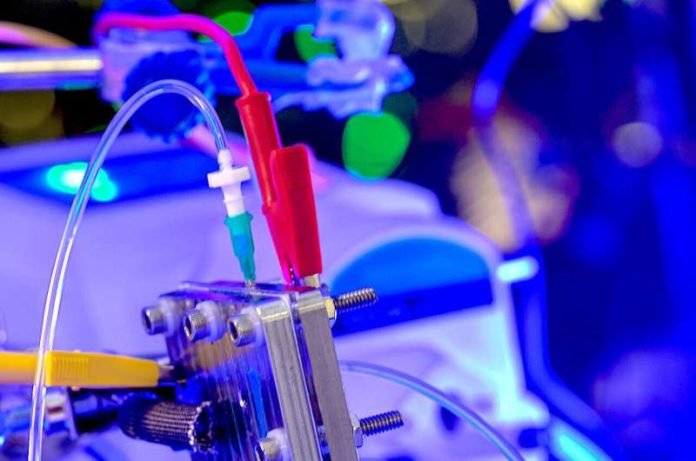
Exciting news has come from Rice University where engineers have developed a new technology that could lower the cost of capturing carbon dioxide (CO2) from all types of emissions.
This innovation could have a big impact on companies looking to reduce their greenhouse gas emissions and could play a crucial role in the efforts to combat climate change.
In a study published in Nature, the team led by Haotian Wang, a chemical and biomolecular engineer, showcased a system that can directly remove CO2 from various sources, like waste gases from factories or even from the air around us.
They do this through an electrochemical reaction, which is a fancy way of saying they use electricity to make a water-and-oxygen-based chemical reaction happen.
Most of the time, capturing CO2 involves two steps: first, using special liquids to separate the CO2 (which is acidic) from other gases, then regenerating the CO2 from that solution, usually by heating it up.
This process can require a lot of heat and often produces other chemicals. But with the new system developed by Wang’s team, it’s a lot simpler and doesn’t produce any other chemicals.
You just need to plug it into an electricity source, and it does its job!
What’s really cool about this system is that it’s not just designed for big factories or power plants. It can be used in smaller settings too.
You could even use it in an office! One of the ideas they have is to pull CO2 from the air and use it to stimulate plant growth in greenhouses.
Even astronauts in space stations could use it to get rid of the CO2 they breathe out!
Wang’s team has built a reactor that removes CO2 with over 98% efficiency and doesn’t require a lot of electricity.
To give you an idea, the amount of electricity a 50-watt lightbulb uses in an hour could produce 10 to 25 liters of pure CO2 using this reactor.
Plus, if the electricity comes from renewable sources, like solar or wind, there’s no added carbon footprint, making it even better for the environment.
The reactor consists of two parts that react with oxygen (one reduces it, and the other evolves it) and a solid-electrolyte layer that conducts ions efficiently.
Previously, the team had used the reactor to turn CO2 into useful things like liquid fuels and pure hydrogen peroxide solutions.
During their research, they noticed that when more electricity was used, more gas bubbles came out of the reactor.
They figured out that these bubbles were high-purity CO2, resulting from the chemical reactions happening in the reactor. They then optimized the system to capture CO2.
This new discovery is an example of why being patient and curious in scientific research is important.
It’s often through these ‘happy accidents’ that we can make new discoveries and innovate new technologies. Now, capturing CO2 might be as simple as flipping a switch!



